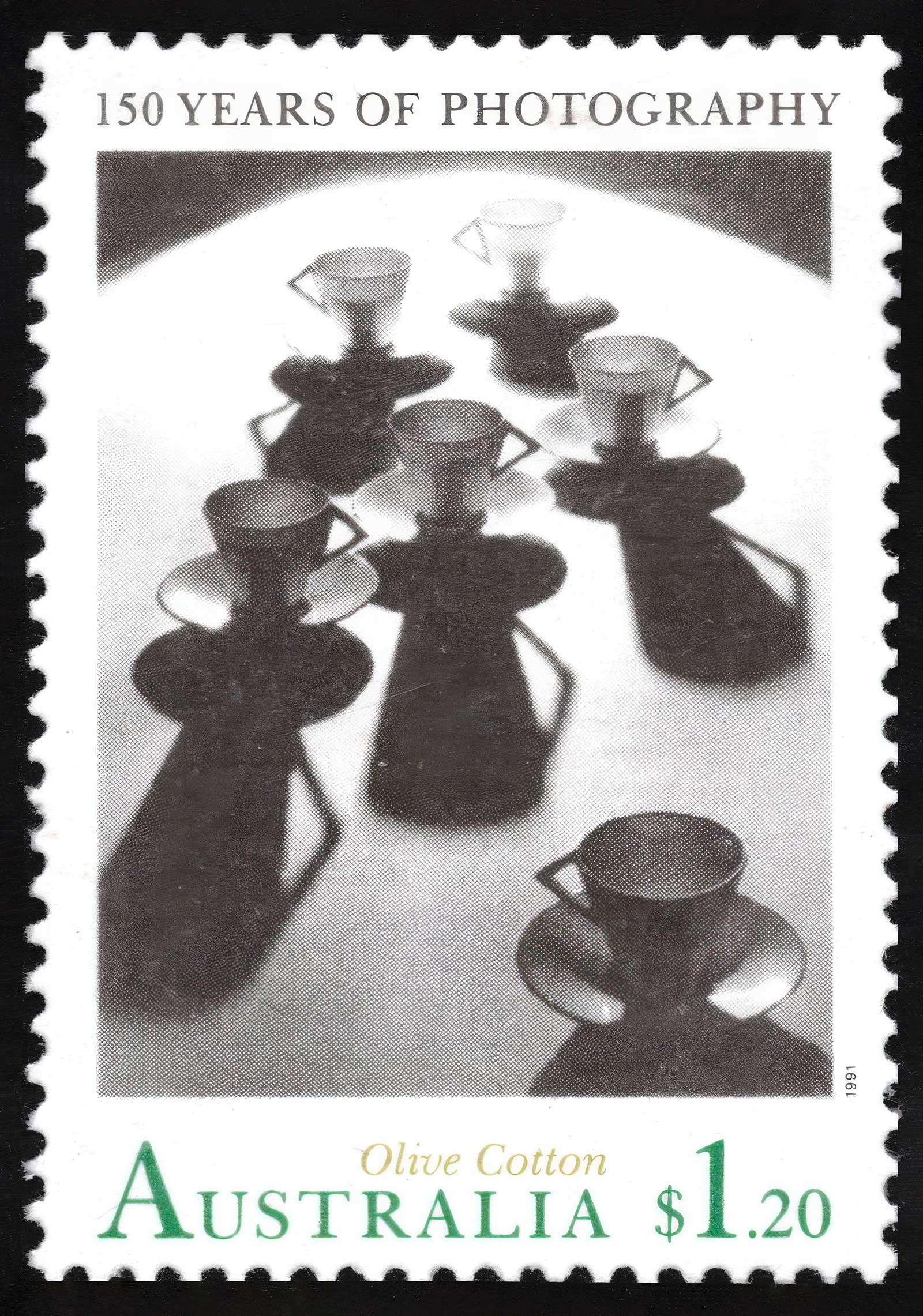
Historical Heroines from Australia
Women photography pioneers to celebrate this month…
Ruth Hollick (1883 – 1977)
Olive Cotton (1911-2003)
Olive Cotton was one of the most important 20th century Australian modernist photographers. Based in Cowra, New South Wales, her pioneering work spanned the 1930s and 40s.
Olive began taking photographs at the age of eleven when she was given a Kodak No.0 Box Brownie. She married her childhood friend Max Dupain and she joined him at his fledgling photography studio, where she referred to herself as, ‘the assistant’. In 1964, during her second marriage, she opened a studio in Cowra, New South Wales, and combined motherhood, teaching and photography.
Creating – rather than simply recording – images, Olive modernised the popular ‘pictorial’ style. In 1985, she received an Australian Council grant and set up a retrospective, reprinting negatives taken over a 40-year period. This cemented her reputation. Olive described her approach as a ‘form of self-expression and drawing with light’. In 2008, the Australian government said that her work was a tribute to nature in all its glory and exquisiteness; their interpretation encapsulates Olive’s interest in science and art – both of which shaped her career in photography. Elements of her artwork, such as strong light and shade, structure, and perspective, came from her love of nature, art, science, and her acute powers of observation.
Polixini Papapetrou (1960-2018)
Born into a Greek immigrant family, Polixini created elaborate and intricate theatrical sets that often nodded to popular culture through thematic scenes and characterisations. Her subjects were dressed-up to represent a historical or fictional role. Her photography practice often focused on documenting and representing subcultures such as bodybuilders, drag queens, and Marilyn Monroe impersonators. Furthermore, she often employed the usage of costumes to create dramatic and theatrical scenes, noted for her themed photo series about people’s identities.
She also spent some time exploring how childhood could be represented in photography, often controversially photographing her own daughter. Her series Dreamchild (2003) and Wonderland (2004) was based on Charles Dogson’s photographs of children and thematic representations in his work Alice in Wonderland.
Margaret (Margarethe) Michaelis-Sachs (née Gross, 1902 – 1985)
Margarethe (Margaret) Gross was born in 1902 into a Jewish family in Dzieditz, near Cracow, in what was then Austria (now Poland). Her liberal upbringing led her to studying photography at the Institute of Graphic Arts and Research in Vienna, followed by apprenticeships in some of the leading Viennese studios of the 1920s including the prestigious Studio d’Ora, where she worked in the New Photography style, in advertising, and fashion. Fleeing Naziism she settled in Australia in 1939 and opened a photographic studio a year later where for the next twelve years she was one of the few women photographers working in Sydney. She specialised in portraiture, advertising, and dance photography until her failing eyesight led to her retirement in 1952.
She kept her early photographs- of the ewish Quarter of Craco and the Spanish Civil War – hidden until her death in 1985, when her son discovered them and donated her extraordinary archive to the National Gallery of Australia. https://maph.org.au/artists/437/
Sue Ford (1943–2009)
Sue Ford (1943–2009), celebrated photographer of social life, known for her personal, feminist approach to her subjects. Sue studied photography at RMIT (Melbourne) and was the first Australian photographer to be given a solo exhibition at the National Gallery of Victoria in 1974. Over the course of her artistic career she worked with still photography and moving images, moving into digital technologies. She is a key figure in the history of avant-garde photographic experimentation in Australia and her work was noteworthy for its critical social engagement.
Destiny Deacon (1957-2024) Melbourne NSW
Destiny was a Kuku/Erub/Mer born political activist and anti artist using humour and the artefacts of 1950s racism to reveal Australian racism in video, installations and polaroid photography. Destiny was known for her witty exploration of indigenous identity using ‘Koori Kitsch’ in a career which only started in the 1990s. She was awarded the Centenary Medal and was made an honoury fellow of the RPS (2022) before her untimely death this year.
She used Kitsch dolls and tourist ephemera to reveal the poverty and deprivation of aboriginal life. One of her most well known images was the 1997 self portrait ‘Me and Carol’ in which she paid homage to Frida Kahlo’s 1937 painting ‘Me and my doll.’
Photos:
Over the Fence 2000
*Hundred Heroines is mindful of photography’s problematic history with race: colonialism and photography were mutually intertwined in Europe’s industrial and imperial expansion. We recognise that many women photographers of the 19th/20th centuries were wealthy, privileged and white, and often played a role in perpetuating colonial stereotypes. We celebrate their achievements in overcoming the obstacle of gender and acknowledge the need to move forward in terms of representation. No community or culture should be exploited in favour of the image.











